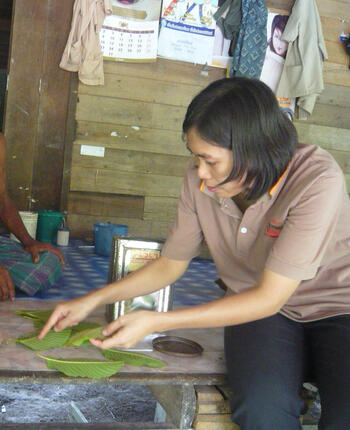Rosenkranz Prize winner to launch microbiome research project in Africa
Studying the microorganisms that live in our gut is a relatively new field, one that has only really taken off in the last decade. In fact, it is estimated that half of the microbes that live in and around our GI track have yet to be discovered.
“This means there is a huge amount of this dark matter within us,” said Ami S. Bhatt, an assistant professor of medicine and genetics who runs the Bhatt Lab at the Stanford School of Medicine. The lab is devoted to exploiting disease vulnerabilities by cataloguing the human microbiome, the trillions of microbes living in and on our bodies.
“I think if we fast-forward to the impact of some these findings in 10 years, we’re going to learn that modifying the microbiota is a potent way to modulate health,” Bhatt said. “Humans are not only made up of human cells, but are a complex mixture of human cells and the microbes that live within us and among us — and these microorganisms are as critical to our well-being as we are to theirs.”
Bhatt, along with key collaborators at the University of Witwatersrand in Johannesburg, and the INDEPTH research consortium, now intends to take this research to Africa.
She is this year’s winner of the of the Rosenkranz Prize for Health Care Research in Developing Countries, awarded by Stanford Health Policy to promising young Stanford researchers who are investigating ways to improve health care in developing countries.
The $100,000 prize is targeted at Stanford’s emerging researchers who are dedicated to improving health care in poorer parts of the world, but may lack the financial resources.
Bhatt, MD, PhD, intends to take the prize money to execute the first multi-country microbiome research project focused on non-communicable disease risk in Africa. The project intends to explore the relationship between the gut microbiome composition and body mass index (BMI) in patients who are either severely malnourished or obese.
“As a rapidly developing continent with extremes of resource access, Africa is simultaneously faced with challenges relating to the extremes of metabolic status,” Bhatt wrote in her Rosenkranz project proposal. The Bay Area native, who is also the director of global oncology at Stanford, came to the School of Medicine in 2014 to focus on how changes in the microbiome are associated with cancer.
In this new project, Bhatt and members of her lab will team up with colleagues in Africa, first in South Africa, and then in Ghana, Burkina Faso, and Kenya. They will leverage the infrastructure already in place at the INDEPTH Network of researchers, using an existing cohort of 12,000 patients at within those four countries. The patients have already consented to be involved in DNA testing and have given blood and urine specimens.
Identifying alterations of the microbiome that are associated with severe malnutrition or obesity could pave the way for interventions that may mitigate the severity or prevalence of these disorders, Bhatt said.
“These organisms are critical to our health in that they are in a delicate balance with one another and their human hosts,” she said. “Alterations in the microbiome are associated with various diseases — but have mostly been studied in Western populations. Unfortunately, little is known about the generalizability of these findings to low- and middle-income countries – where most of the world’s population lives.”
Bhatt said that as Africa rapidly continues to develop, the continent is simultaneous faced with challenges relating to extreme weight gain and loss. While the wealthy are facing obesity and its associated disease such as stroke, heart failure and diabetes, many people are still faced with issues related to food insecurity, hunger and malnutrition.
The research, she hopes, could lead to aggressive behavioral, dietary and lifestyle modifications targeted at maintaining healthy BMI in at-risk individuals.
Video by Ankur Bhatt
Grant Miller, an associate professor of medicine and core faculty member at Stanford Health Policy who chaired the Rosenkranz Prize committee this year, believes Bhatt’s research could eventually break new ground.
“The entire Rosenkranz Prize selection committee was highly impressed with Ami and the innovation of her project,” Miller said. “Ami’s work on the human microbiome in the extremes of nutritional status in developing countries — including its potential link to obesity, an emerging challenge in low income countries — is potentially path-breaking.”
The award’s namesake, George Rosenkranz, first synthesized cortisone in 1951, and later progestin, the active ingredient in oral birth control pills. He went on to establish the Mexican National Institute for Genomic Medicine, and his family created the Rosenkranz Prize in 2009.
The award embodies Dr. Rosenkranz’s belief that young scientists hold the curiosity and drive necessary to find alternative solutions to longstanding health-care dilemmas.








